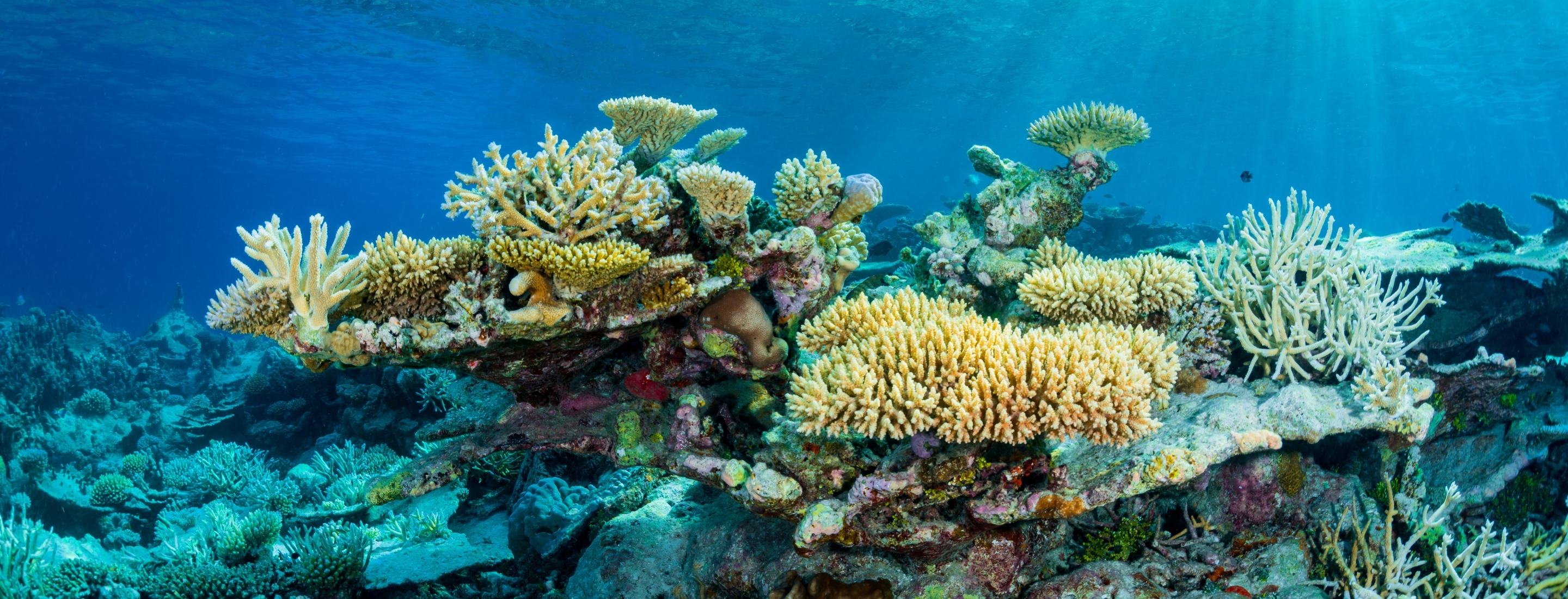
Marine scientists and eco-savvy beachgoers have been raising concerns about the impact chemical sunscreens are having on our ocean ecosystems for years. Active chemical sunscreen ingredients — like oxybenzone, octinoxate, and octocrylene — are even being reevaluated by the Food and Drug Administration for human safety. These concerns have sparked a boom in so-called 'reef friendly' sunscreens flooding the market.
But what does 'reef friendly' actually mean? How effective are more eco-friendly sunscreens? And how safe are these alternative sunscreens to the marine environment?
Surfrider has created the Reef Friendly Sunscreen Guide to eliminate guesswork. With it, you can spend less time worrying about which sunscreen to buy and more time simply and safely enjoying the beach.
How Conventional Sunscreens Harm Our Ocean
Broad-spectrum sunscreens are designed to block both UVB and UVA rays. To do that and stay smooth, invisible, and affordable, many conventional sunscreens rely on a cocktail of synthetic chemicals. When sunscreen washes off while swimming, surfing, or splashing around, those chemicals can harm both marine life and freshwater species.
This not only reduces the reef’s ability to act as an important nursery and feeding ground for hundreds of marine species, but damaged reef ecosystems also lose the benefits provided by healthy, functioning reefs — such as coastal protection from storm surge, preservation of sandy beaches, breeding grounds for commercial fisheries, and recreational value from snorkeling, scuba diving, and wildlife viewing.
Conventional chemical sunscreens can also directly harm fish, impairing neurological and reproductive abilities, increasing levels of disease and miscarriages, and acting as hormone disruptors that impact the immune system.
Human Health Concerns
Some of these sunscreen chemicals that are poisoning the ocean environment get absorbed directly through our skin and into our bodies.
The Fourth National Report on Human Exposure to Environmental Chemicals by the Center for Disease Control (CDC) found that over 90% of the over 2,500 people tested had oxybenzone in their urine. Sunscreen chemicals have also been found in breast milk. It’s estimated that four percent of the oxybenzone in our sunscreen is absorbed by our bodies — during each sunscreen application!
Although the long-term human health impacts of oxybenzone are unknown, with more evidence becoming available about the toxicity of ingredients in traditional sunscreen, the FDA recently proposed removing all over-the-counter chemical sunscreen ingredients (including avobenzone, oxybenzone, octisalate, homosalate and more) from their Generally Recognized as Safe and Effective list due to the potential for adverse human health impacts and a lack of safety data on their use in over the counter sunscreen products.
So why would you risk damaging your own endocrine system — which controls growth, development, metabolism, and reproduction — by choosing to use a chemical sunscreen that is known to be toxic to marine life and the ocean environment, when safer alternatives exist?
Stay Safe, Stay ACTIVE
We know the nitty-gritty of sunscreens can feel complicated and overwhelming, but at the end of the day, it’s all about the active ingredients. A reef-friendly sunscreen will only contain the minerals zinc oxide and/or titanium dioxide as active ingredients. That’s it! If there’s a chemical listed, then it’s not reef friendly — no matter what the label claims.
The terms 'reef friendly' and 'reef safe' are not regulated, so you can’t just trust products with this description. Any brand can use those terms on the bottle, even if the ingredients tell a different story. The best and only way to know for sure is to read the label carefully.
Ingredients to avoid include:
- Avobenzone
- Octinoxate
- Octocrylene
- Oxybenzone
- Nanoparticles
- PABA
- Parabens
- Triclosan
In summary – stick with non-nano mineral sunscreens, skip the chemicals, and check your labels like a reef-protecting champ.
